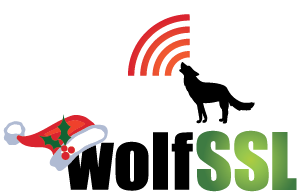Carmakers these days are clearly seduced by the power automotive electronics have to help sell their cars. At wolfSSL, we`re seeing more and more connected auto devices getting designed (and secured by CyaSSL) in recent years. All of the carmakers and their suppliers we deal with are quite cognizant of the security risks their connected […]
Read MoreMore TagMonth: July 2013
SSL and Cryptography in Software Defined Networks
Hi! If you follow the networking market, you probably know that Software Defined Networks (SDN) represent a potential tectonic shift in how we think about and design network environments. The concept has been around since 2005, but has gained significant momentum in the last couple of years, to the point where it is not just […]
Read MoreMore TagSimon and Speck Lightweight Block Ciphers in wolfCrypt and wolfSSL
Last month the NSA released a paper on Simon and Speck, which are lightweight block ciphers that appear to be applicable to a large part of our embedded user base. The paper can be found here: http://eprint.iacr.org/2013/404.pdf Our users who have a keen interest in small size and low power consumption will find this paper […]
Read MoreMore TagwolfSSL 2013 First Half Report
wolfSSL has made considerable progress in the first half of 2013, including a company name change to wolfSSL, improvements to the CyaSSL lightweight SSL library, initiation of our FIPS 140-2 certification, and the introduction of our wolfCrypt cryptography library. Being an open source company, we like to keep our users, customers, and followers up to […]
Read MoreMore TagFeedback Requested on Supported ECC Curves
The wolfSSL lightweight SSL library has supported ECC (Elliptic curve cryptography) since version 2.4.6 in December of 2012. Currently wolfSSL supports the most common ECC curve type at each bit strength defined by the standard, including the following. SECP160R1SECP192R1 (also called PRIME192V1)SECP224R1SECP256R1 (also called PRIME256V1)SECP384R1SECP521R1wolfSSL defaults to SECP256R1, as is suggested, and as other SSL […]
Read MoreMore TagSome Notes on Testing wolfSSL
We are often asked about how we test wolfSSL. At this point, we believe we have testing that is quite robust, but we acknowledge that there is no such thing as perfect testing. With that knowledge in mind, we have the goal of incrementally improving and automating our testing rigs over time. Our overriding goal […]
Read MoreMore TagReduce Packet Data Overhead in M2M applications with wolfSSL
Many of our customers use the wolfSSL lightweight SSL/TLS package in M2M applications where usage is charged based on data transfer. As such, it becomes important to minimize data transfer rates when running SSL. Here are a few thoughts on how wolfSSL M2M users can minimize data packet overhead when implementing our embedded SSL: 1) […]
Read MoreMore Tag
